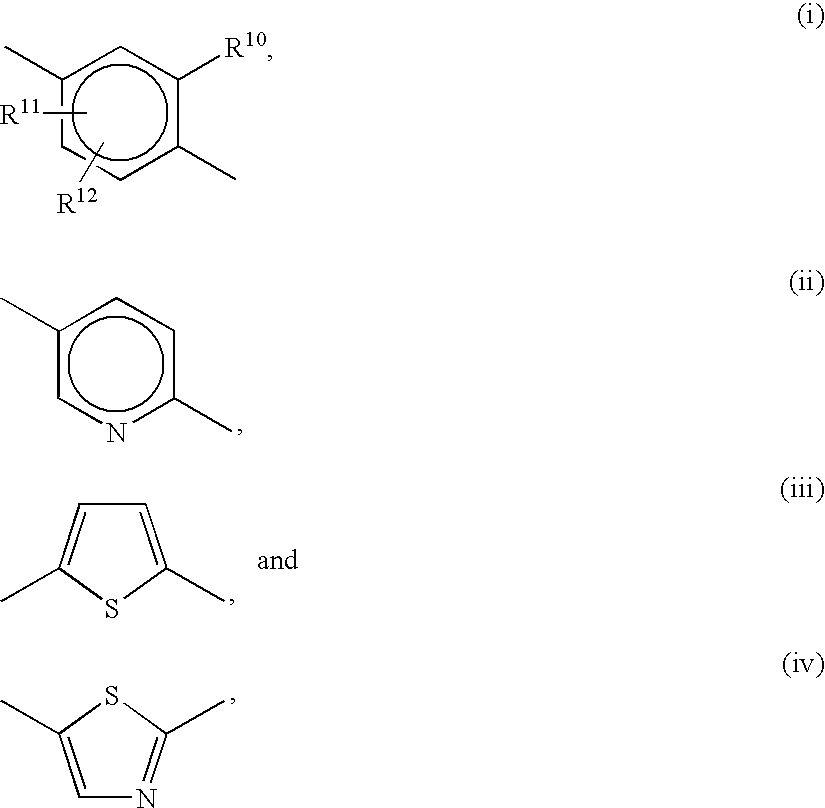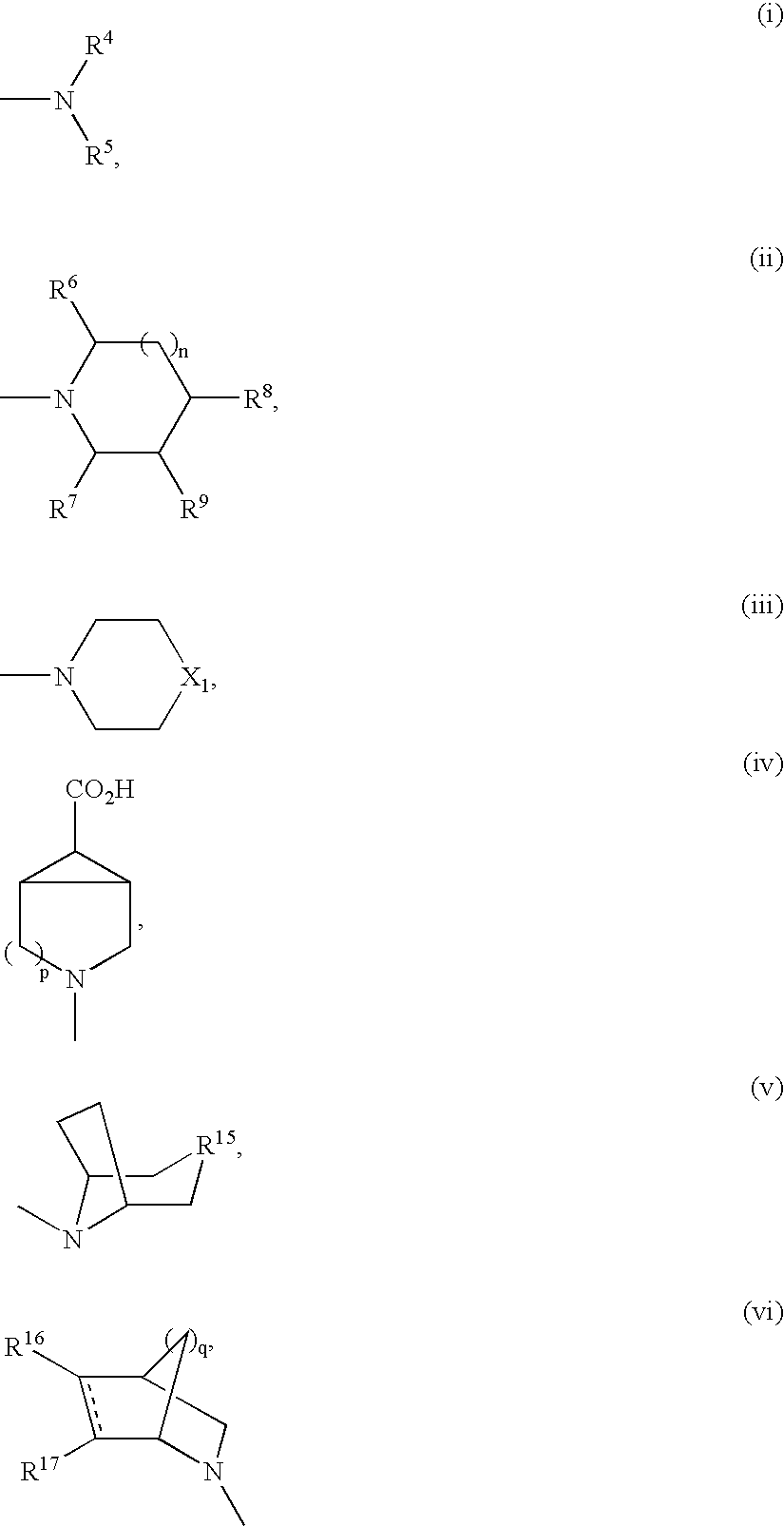Immunosuppressive effects of administration of a cyclooxygenase-2 inhibitor and a leukotriene A4 hydrolase inhibitor
a technology of cyclooxygenase and leukotriene, applied in the field of immunology, can solve the problems of increased malignancy, hair loss, hair loss, and hair loss, and increase the incidence of malignancy, and achieve the effects of suppressing the growth of normal cells, and reducing the number of patients
- Summary
- Abstract
- Description
- Claims
- Application Information
AI Technical Summary
Problems solved by technology
Method used
Image
Examples
example 1
4-[5-(4-Chlorophenyl)-3-(trifluoromethyl)-1H-pyrazol-1-yl]benzenesulfonamide
Step 1: Preparation of 4,4,4-trifluoro-1-[4-(chloro)phenyl]-butane-1,3-dione
Ethyl trifluoroacetate (23.52 g, 166 mmol) was dissolved in methyl tert-butyl ether (75 mL). To the stirred solution was added 25 weight % sodium methoxide (40 mL, 177 mmol). 4′-Chloroacetophenone (23.21 g, 150 mmol) was dissolved in methyl tert-butyl ether (20 mL) and added to the reaction dropwise. After stirring overnight (15.75 hours), 3N HCl (70 mL) was added. The organic layer was collected, washed with brine (75 mL), dried over MgSO4, filtered, and concentrated in vacuo to give a yellow-orange solid. The solid was recrystallized from isooctane to give the dione (31.96 g, 85%): mp 66-67° C.
Step 2: Preparation of 4-[5-(4-chlorophenyl)-3-(trifluoromethyl)-1H-pyrazol-1-yl]benzenesulfonamide.
4-Sulphonamidophenyl hydrazine hydrochloride (982 mg, 4.4 mmol, 1.1 equiv.) was added to a stirred solution of 4,4,4-trifluoro-1-[4-(c...
example 2
4-[5-(3-Fluoro-4-methoxyphenyl)-3-(difluoromethyl)-1H-pyrazol-1-yl]benzenesulfonamide
Step 1: Preparation of 3′-fluoro-4′-methoxy-acetophenone.
Acetyl chloride (51.0 g, 0.65 mol) was added dropwise to a stirred solution of aluminum chloride (80.0 g, 0.6 mol) and chloroform (750 mL), maintaining the temperature between 5-10° C. The mixture was stirred for 10 minutes at 5° C. before the dropwise addition of 2-fluoroanisole (62.6 g, 0.5 mol). The mixture was stirred at 0-10° C. for 1 hour and poured into ice (1 L). The resultant layers were separated and the aqueous layer was extracted with dichloromethane (2×250 mL) The combined organic layers were washed with water (2×150 mL), dried over anhydrous MgSO4, filtered and concentrated in vacuo to a volume of 300 mL. Hexanes were added and a white solid formed which was isolated by filtration and air dried. This material was recrystallized from a mixture of dichloromethane and hexanes to afford material suitable for use in the next step ...
example 3
3-[Methyl(3-[4-phenylmethyl)phenoxy]propyl]-amino]propanoic acid
3-[Methyl[3-[4-phenylmethyl)phenoxy]propyl]-amino]propanoic acid is prepared by a four step method. 4-Hydroxydiphenylmethane is alkylated with 3-chlorobromopropane at 70° C. in the presence of potassium carbonate for 16 hours to form the 1-chloro-3-[4-phenylmethyl)phenoxy]propane. The chloropropane is condensed with methylamine at 60° C. in a Parr bomb at 200 psi for 20 hours. The secondary amine is isolated as the hydrochloride salt. Condensation of the secondary amine ith benzyl acetate in ethanol at room temperature for 3 ours affords the β-amino acid derivative. The derivative is directly hydrogenated (Pd / C, H2, ethanol, 2 psi) to afford 3-[methyl[3-[4-phenylmethyl)phenoxy]propyl]-amino]propanoic acid.
A combination of a cyclooxygenase-2 inhibitor and a LTA4 hydrolase inhibitor is evaluated as described in the following tests.
Transplantation and Evaluation of Graft Rejection
The method of...
PUM
 Login to View More
Login to View More Abstract
Description
Claims
Application Information
 Login to View More
Login to View More - R&D
- Intellectual Property
- Life Sciences
- Materials
- Tech Scout
- Unparalleled Data Quality
- Higher Quality Content
- 60% Fewer Hallucinations
Browse by: Latest US Patents, China's latest patents, Technical Efficacy Thesaurus, Application Domain, Technology Topic, Popular Technical Reports.
© 2025 PatSnap. All rights reserved.Legal|Privacy policy|Modern Slavery Act Transparency Statement|Sitemap|About US| Contact US: help@patsnap.com



